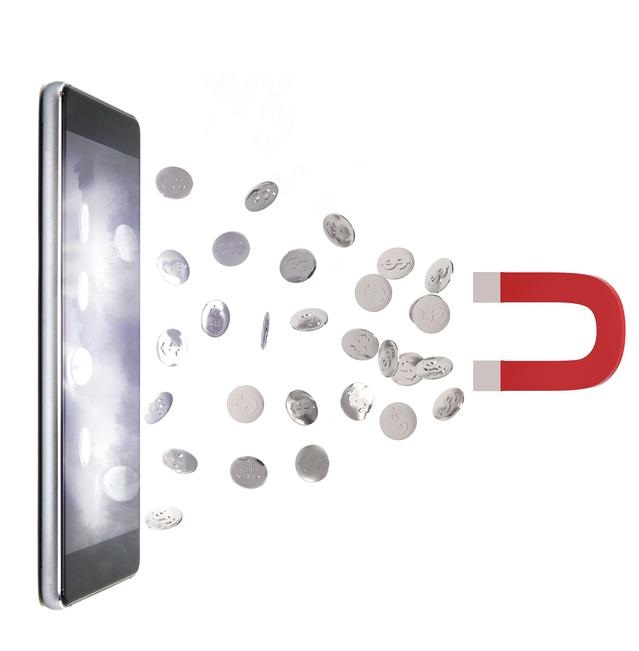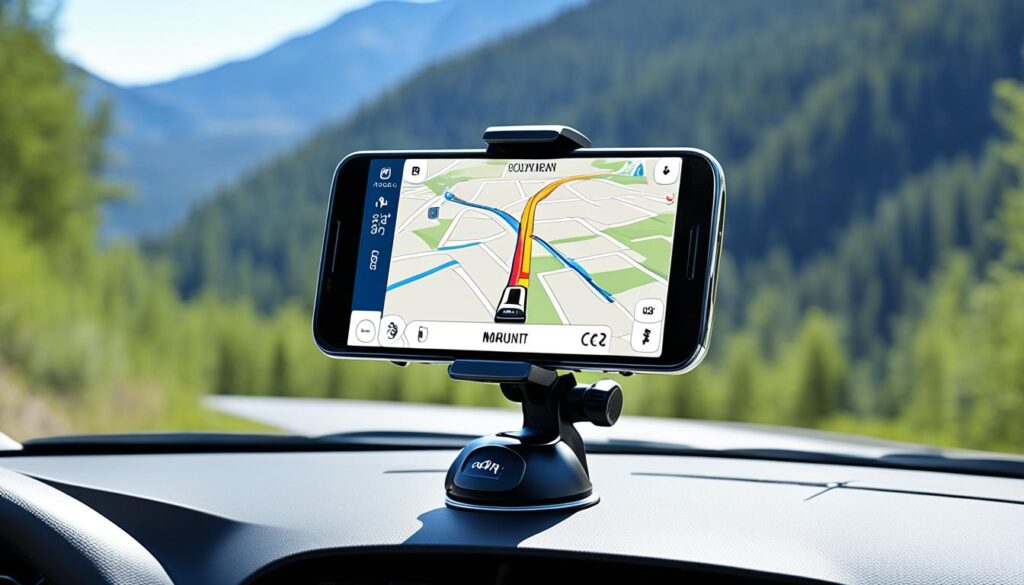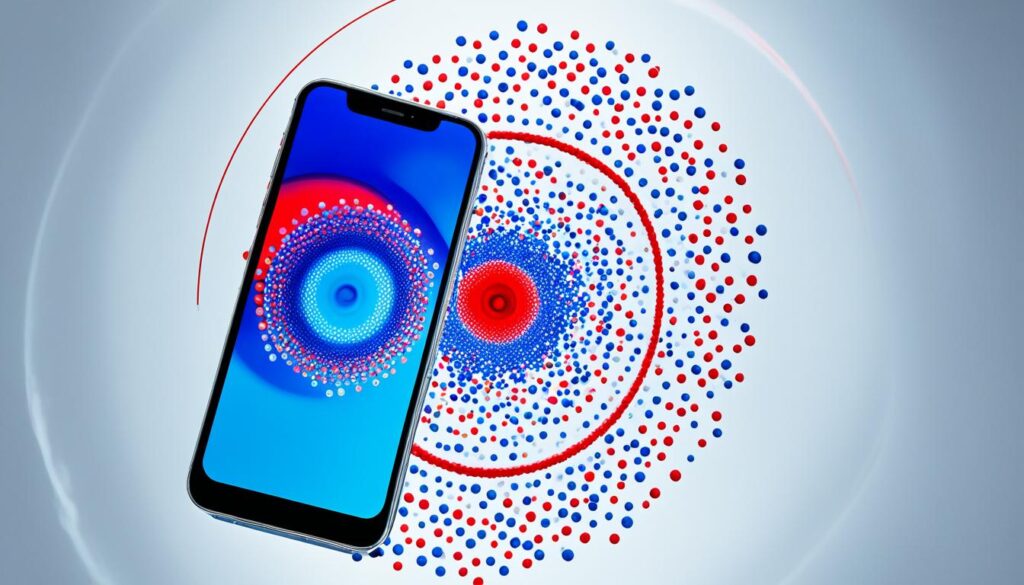How Smartphones Use Magnets: Unveiling Tech Secrets
Have you ever wondered how your smartphone utilizes magnets for various functions? From speakers and microphones to vibration motors and magnetic sensors, magnets play a crucial role in the functionality and features of smartphones. In this article, we will delve into the world of smartphone magnet technology, exploring the different magnetic components in smartphones and their applications. Get ready to unveil the tech secrets behind how smartphones use magnets to enhance user experience and functionality.
Key Takeaways:
- Smartphones utilize magnets for various functions and feature enhancements.
- Magnetic components in smartphones include speakers, microphones, vibration motors, and sensors.
- Magnets play a crucial role in smartphone accessories like car mounts and wireless charging pads.
- Smartphones utilize magnetometers for navigation and compass applications.
- Magnets also revolutionize smartphone security with authentication systems and enhanced payment security.
The Invisible Influence: How Magnets Power Your Smartphone Experience
Magnets have a hidden influence on our smartphone experience, powering various features and functions. They play a crucial role in enhancing user experience and functionality. Let’s explore how magnets are integrated into smartphones and their impact on our daily lives.
Smartphones are equipped with magnetic components that contribute to their overall functionality. These components include magnet sensors, which detect changes in the surrounding magnetic field. The data collected by these sensors enables the smartphone to perform various tasks and provide users with a seamless experience. From auto-rotate screen orientation to detecting the presence of a flip cover, magnet sensors enhance the usability and convenience of our smartphones.
Magnetic features in smartphones are also responsible for powering essential functions. One such example is the vibration motor, which provides haptic feedback during notifications or alerts. This motor relies on the interaction between magnets to create vibrations, adding a tactile element to our smartphone experience.
Furthermore, magnets are crucial in the functioning of speakers and microphones in smartphones. They help in producing sound by interacting with the voice coil, which generates audio signals. Magnets are also involved in the tuning and amplification of these sound waves, resulting in the high-quality audio we enjoy while using our smartphones.
Innovation with magnets has further revolutionized smartphone technology. One notable example is the use of magnetic attachments, such as magnetic chargers and mounting systems. These attachments provide users with convenient and efficient ways to charge their devices and secure them in various settings, respectively. Magnetic attachments not only simplify our everyday activities but also enhance the versatility of smartphones.
In conclusion, magnets are an invisible yet powerful force that powers our smartphone experience. They contribute to the functionality, convenience, and innovation we find in modern smartphones. From magnet sensors to magnetic attachments, the seamless integration of magnets in smartphones enhances user experience and brings us closer to the future of mobile technology.
Magnetic Components in Smartphones: An Overview
Smartphones are equipped with various magnetic components that contribute to their functionality and features. In this section, we will provide an overview of these magnetic components and their role in smartphones.
Speakers and Microphones: The Role of Magnets
Magnets play a crucial role in the functioning of speakers and microphones in smartphones. By utilizing the power of magnets, smartphones are able to produce high-quality sound and capture clear audio. In speakers, magnets are used to drive the diaphragm, creating vibrations that generate sound waves. On the other hand, microphones use magnets to convert sound waves into electrical signals, allowing users to communicate effectively during phone calls and voice recordings.
Vibration Motors: Powered by Magnetism
Smartphones also feature vibration motors that provide haptic feedback, alerting users to incoming notifications, calls, and other interactions. These motors rely on the power of magnets to create rapid vibrations, producing the desired tactile response. By carefully controlling the magnetic field, smartphones can offer different vibration patterns and intensities, enhancing user experiences and interactions with the device.
Magnetic Sensors: Enriching Functionality
Magnetic sensors are another important component found in smartphones. These sensors detect and measure magnetic fields, enabling various functionalities and features. For example, smartphones use magnetic sensors to determine the device’s orientation and provide accurate compass readings. Additionally, they are used in magnetometers to detect magnetic fields from external sources, enhancing navigation and location-based services. Magnetic sensors in smartphones open up a wide range of possibilities, from augmented reality experiences to precise navigation and beyond.
How Do Smartphones Use Magnets?

In the world of smartphones, magnets play a vital role in enhancing functionality and providing innovative features. From magnetic attachments to secure phone holders, smartphones have various applications for magnets. Let’s explore the fascinating ways in which smartphones utilize magnets for a better user experience.
One of the key uses of magnets in smartphones is for magnetic data transfer. By using magnetic connectors or adapters, smartphones can transfer data quickly and securely. This technology eliminates the need for traditional physical connectors, making data transfer more convenient for users.
Another application of magnets in smartphones is the integration of magnetic sensors. These sensors detect magnetic fields and enable features such as compass functionality and magnetic field detection. They enhance the smartphone’s capability to provide accurate direction and detect the presence of magnetic objects or fields.
Smartphones also utilize magnets for innovative features, such as magnetic phone cases and magnetic stands. These accessories use magnets to securely hold the smartphone in place, providing convenience and stability. Additionally, magnets are utilized in wireless charging pads for easy and efficient charging.
Through these various applications, magnets contribute to the overall functionality and versatility of smartphones. They enhance the user experience and provide convenient solutions for data transfer, secure phone holding, and charging.
So, the next time you use your smartphone and wonder how it achieves its remarkable capabilities, remember the role that magnets play behind the scenes. They are the unsung heroes powering your smartphone’s functionality and enhancing your digital experience.
Navigation and Compass Apps: Guided by Earth’s Magnetism
Have you ever wondered how navigation and compass apps on your smartphone accurately determine your direction? In this section, we will explore the role of magnets in navigation and compass apps. We will discuss how smartphones utilize magnetometers, also known as magnetometers, to detect the Earth’s magnetic field and provide accurate compass readings. Discover how magnets guide your smartphone’s navigation and compass apps.
Navigation and compass apps have become an integral part of our daily lives, helping us find our way in unknown places and ensuring we’re always on the right track. But have you ever wondered how these apps precisely determine our direction and point us in the right way? The secret lies in the integration of magnetic field sensors, known as magnetometers, in our smartphones.
Smartphones are equipped with a magnetic field sensor, also known as a magnetometer, which detects the Earth’s magnetic field. This sensor allows navigation and compass apps to accurately determine the user’s orientation and provide reliable compass readings. By utilizing the magnetic field sensor in smartphones, these apps can effectively guide users to their desired destinations.
The magnetometer in smartphones measures the strength and direction of the Earth’s magnetic field. This information is then processed by the smartphone’s software to calculate the device’s orientation and display it on the screen. Whether you’re walking, driving, or hiking, navigation and compass apps rely on this technology to ensure accurate and reliable direction guidance.
Smartphone compass technology has come a long way, and advancements in magnetometer technology have made navigation apps more precise and reliable than ever before. With the integration of magnetometers in smartphones, users can confidently navigate unfamiliar areas and explore the world with ease.
The Science Behind Magnetic Phone Accessories

Magnetic phone accessories have gained popularity in recent years. These innovative accessories utilize the power of magnets to enhance convenience and functionality in smartphone usage. In this section, we will explore the science behind magnetic phone accessories and their integration with smartphones, providing a deeper understanding of their benefits and features.
Magnetic Car Mounts: Convenience Meets Technology
Magnetic car mounts are one of the most popular magnetic phone accessories. By utilizing a strong magnetic base, these mounts securely hold your smartphone in place while driving. The convenience of a magnetic car mount allows you to easily access your phone for navigation, music control, or hands-free calling. The powerful magnets ensure a secure and stable hold, keeping your smartphone within reach and providing a safer driving experience.
Wireless Charging Pads: The Magnetic Connection
Wireless charging pads have revolutionized the way we charge our smartphones. These pads use magnetic induction to transfer power from the pad to the smartphone without the need for cables. The magnetic connection between the pad and the smartphone allows for effortless charging by simply placing the device on the pad. The magnets ensure proper alignment and optimal charging efficiency, making wireless charging a convenient and hassle-free experience.
| Magnetic Phone Accessory | Function |
|---|---|
| Magnetic Car Mount | Securely holds smartphones in cars for easy access and safer driving |
| Wireless Charging Pad | Enables convenient, cable-free charging through magnetic induction |
As demonstrated by the table above, magnetic phone accessories offer various functions to enhance smartphone usage. Whether it’s the convenience of a magnetic car mount or the wireless charging capabilities of a magnetic charging pad, these accessories utilize the power of magnets to provide seamless integration with smartphones.
By understanding the science behind magnetic phone accessories, users can make informed decisions when choosing the right accessories for their smartphones. Whether it’s for convenience, functionality, or both, magnetic phone accessories offer an innovative and user-friendly way to enhance smartphone usage.
Magnetometers: The Sensor You Didn’t Know Your Phone Had

Did you know that your smartphone is equipped with a built-in magnetometer? This often-overlooked sensor is responsible for detecting and measuring magnetic fields. In this section, we will explore the role of magnetometers in smartphones and uncover the fascinating world of magnetic technology in cell phones.
A magnetometer is a small electronic component that is able to detect and measure magnetic fields. It works by utilizing the principles of magnetism and the interaction of magnetic fields with the sensor. This sensor is essential for various magnetic features and functionalities in your smartphone.
With the help of the magnetometer, your smartphone is able to provide accurate compass readings, detect magnetic attachments, and enable innovative magnetic functionalities. The magnetometer allows your phone to sense changes in magnetic fields and convert them into useful data that can be utilized by different applications and features.
For example, the magnetometer plays a crucial role in compass apps, guiding you in the right direction based on the Earth’s magnetic field. Additionally, it enables your phone to detect when a magnetic attachment, such as a phone case or a magnetic accessory, is connected, triggering specific actions or settings.
The use of magnetometers in smartphones showcases the constant innovation and integration of magnetic technology in cell phones. These sensors contribute to enhancing user experience and expanding the functionality of our beloved devices.
Next time you reach for your smartphone, remember the hidden sensor that enables various magnetic features and functionalities – the magnetometer. It’s just another example of how magnets are revolutionizing the world of smartphones.
Understanding Magnetic Interference with Smartphones
Magnets can have an impact on smartphones beyond their intended purposes. In this section, we will explore the effects of magnetic interference on signal reception and data transfer in smartphones. We will discuss how magnets can potentially weaken signals and affect the performance of your device. Additionally, we will address the myth of magnets erasing smartphone data and uncover the truth behind this belief. Gain a deeper understanding of how magnets can interfere with your smartphone’s functionality.
Effects on Signal Reception and Data Transfer
Magnetic interference can disrupt the signals that smartphones rely on for communication. The presence of strong magnetic fields near your device can cause disturbances in wireless signals, leading to dropped calls, slow internet connections, and poor reception.
Additionally, magnets placed near antennas or other critical components can distort electromagnetic waves, resulting in reduced signal strength. This interference can limit the range and reliability of your smartphone’s connectivity.
When it comes to data transfer, magnets can interfere with the performance of near-field communication (NFC) technology and wireless charging. Magnetic fields can disrupt the precise transfer of data and energy between devices, leading to slower transfer speeds or failed connections.
Can Magnets Really Erase Your Data?
There is a common misconception that magnets can erase smartphone data. However, this is largely a myth. The storage technology used in modern smartphones, such as flash memory, is not susceptible to magnetism like older magnetic storage devices.
While the magnetic field produced by a typical refrigerator magnet or magnetic smartphone case will not erase your data, it is still advisable to avoid placing magnets directly on your device. Strong magnets, such as those used in industrial settings or magnetic resonance imaging (MRI) machines, can potentially cause damage to your device’s internal components if they come into direct contact.
It’s important to note that most smartphones today are equipped with built-in magnetic sensors to detect and measure magnetic fields. These sensors can help your device provide interactive features like compass functionality and auto-rotate screens, but they are not powerful enough to erase your data.
By understanding the potential impact of magnets on your smartphone, you can take precautions to avoid interference and ensure optimal device performance.
The Curious Case of Magnetic Messaging
In this section, we will explore the curious case of magnetic messaging in smartphones. We will discuss how smartphones can utilize the magnetic field sensor, or magnetometer, to receive messages in the form of a varying magnetic field. Discover the potential of magnetic messaging and its applications in the world of smartphones.
Revolutionizing Smartphone Security with Magnets
Magnets are revolutionizing smartphone security in various ways. In this section, we will explore magnet-based authentication systems that enhance the security of smartphones. We will discuss how magnetic sensors play a role in these systems and provide an extra layer of protection. Additionally, we will explore how close-proximity magnetic signals can enhance payment security on smartphones. Discover the innovative ways magnets are securing your smartphone and personal information.
Magnet-Based Authentication Systems
Smartphone manufacturers are implementing magnet-based authentication systems to ensure secure access to devices. These systems utilize the smartphone’s magnetic sensor to detect and authenticate magnetic patterns generated by wearable devices or other digital accessories. By requiring the presence of a specific magnetic field, these systems enhance the security of user authentication, making it more difficult for unauthorized individuals to gain access to smartphones.
Enhanced Payment Security with Close-Proximity Magnetic Signals
The use of magnets in payment security has become increasingly popular. Close-proximity magnetic signals, also known as Magnetic Secure Transmission (MST), allow smartphones to securely transmit payment information to compatible payment terminals. By generating a unique magnetic field, smartphones can securely communicate with payment terminals, preventing unauthorized data interception. This technology provides an additional layer of security, ensuring safe and reliable mobile payments.
Smartphone Magnet Myths Debunked: The Real Effects of Neodymium Magnets
There are many myths and misconceptions surrounding the use of magnets in smartphones. In this section, we will debunk these myths and uncover the real effects of neodymium magnets in smartphones. Let’s separate fact from fiction and gain a clearer understanding of the role of neodymium magnets in your smartphone.
One common myth is that magnets can damage cell phones. While it is true that strong magnets can disrupt certain electronic devices, the neodymium magnets used in smartphones are specifically designed to have minimal interference. These magnets are strategically placed and shielded to prevent any negative impact on the device’s performance. So rest assured, your smartphone is built to withstand the presence of magnets.
Another misconception is that magnets can erase smartphone data. However, this is not the case. The neodymium magnets in smartphones are not powerful enough to erase or corrupt data. The data stored in your smartphone is safely stored on non-magnetic components, such as flash storage. So you can use magnets and magnetic accessories without worrying about losing your precious data.
So, what is the real effect of neodymium magnets in smartphones? These magnets play a crucial role in various magnetic features found in smartphones, including magnetic sensor technology, attachment systems, and accessories. They enhance the functionality and user experience of your device, allowing for easy attachment of magnetic accessories, such as car mounts and wireless chargers. These magnets are carefully calibrated to provide a seamless and secure connection.
